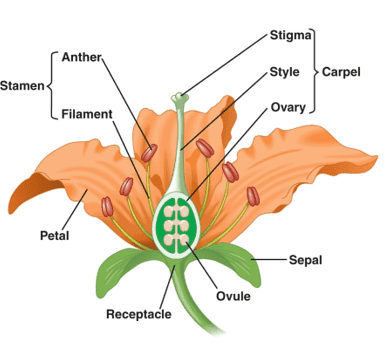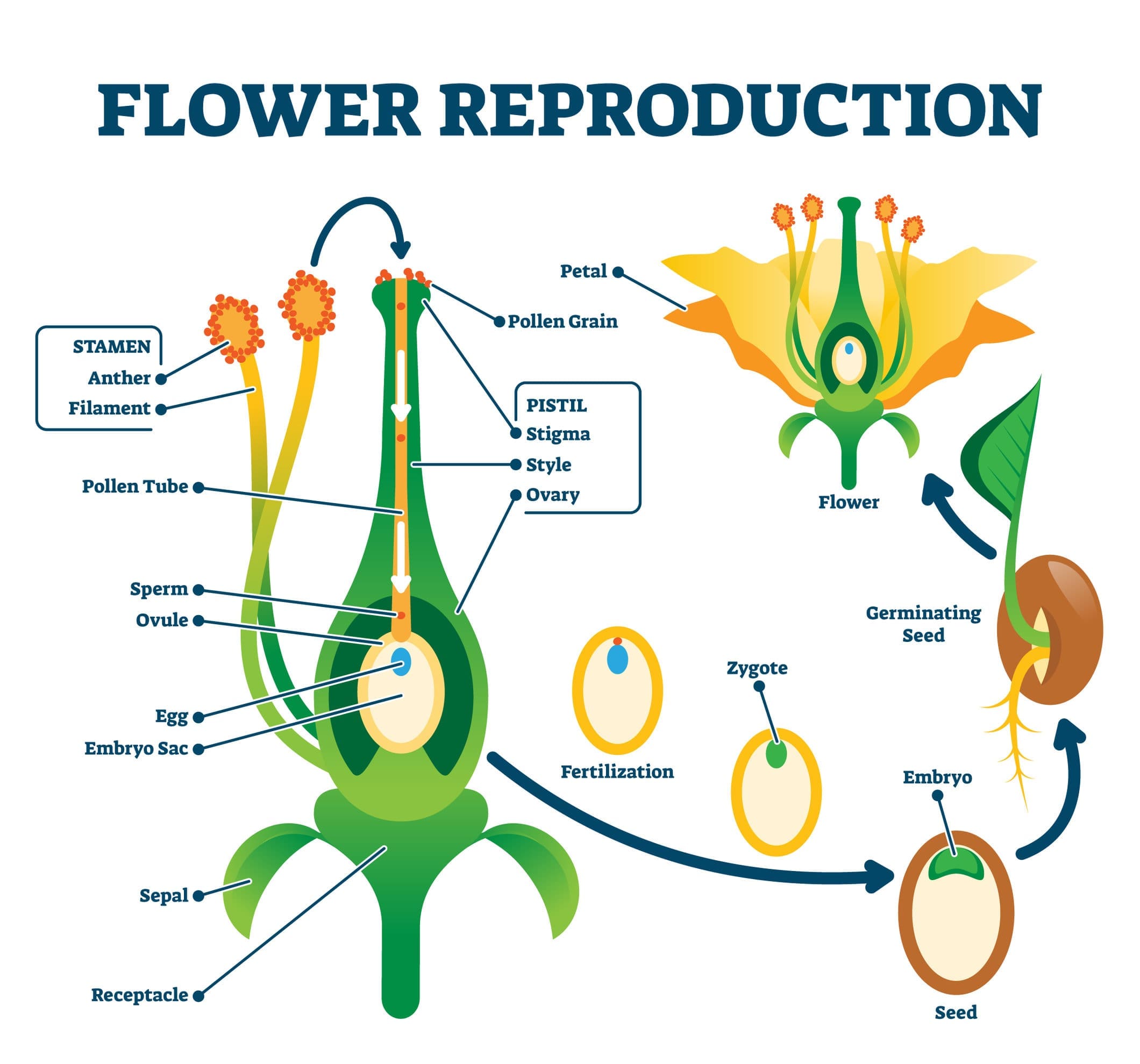In this post
For flowering plants to reproduce sexually the male gamete, known as pollen, from one plant must be transferred to another plant where it meets and fertilises the female gamete, known as ovules.
The structure of a flowering plant is shown below:

The male part of the flowering plant is known collectively as the stamen. The stamen is composed of the anther which produces the pollen and the filament which supports the anther. The female part of the flowering plant is known collectively as the carpel. It is made up of the stigma which traps the pollen, the style and the ovary which produces the ovules.
The pollen must be transferred from the anther of one plant to the stigma of another plant for pollination to occur. This transfer of pollen could occur by either insect pollination or wind pollination.
Insect pollination
Plants with flowers are usually pollinated through insects. For insect pollination to occur the structure of the flowering plant must be adapted in such a way as to attract the insect, allow the insect to freely collect the pollen and move away and have the stigma exposed so that the insect is able to land close to and transfer the pollen directly onto it. These adaptations include:
- The petals on the flower are brightly coloured. Insects can see colours so the bright colours on the petals act as signals to attract the insects towards them.
- The flowering plants often emit strong scents which act as chemical signals to attract the insects towards them.
- Flowering plants produce nectar which is a source of fructose or food for the insect and attracts insects towards the plant.
- The anthers are inside the plant which protects the pollen from being lost by wind.
Wind pollination
Wind pollination is often used for plants without flowers, for example grasses and trees. In wind pollination the pollen grains are carried through the air by the movement of wind. As insects are not needed for pollination these plants do not have coloured petals and do not produce nectar or scents as this would just be a waste of energy. Instead these types of plants are adapted in the following ways:
- Lightweight pollen grains which are carried easily through the air.
- Anthers hang/stand clear of the flower structure so that they are exposed to the wind.
- The stigma is also outside of the flower structure and has a large surface area to maximise the collection of pollen grains from the wind passing over it
- Pollen grains are produced in very large quantities to maximise the chance of successful pollination as some pollen grains will inevitably be blown away from the other plants.
Fertilisation
When pollination has occurred, the pollen attached to the stigma grows a pollen tube which travels down through the stigma of the flower to the ovary. The pollen nucleus then travels down the pollen tube towards the ovary where it meets and fuses with the ovule in the process of fertilisation. The fertilised ovule then becomes a seed. The outside of the ovule forms a seed coating, also known as a testa. Inside the seed, cotyledons or food stores form which provide nutrition for the growing seedling. The walls of the ovary become thicker as they fill with sugars and proteins. This thickening of the ovary walls forms a fruit.
Germination
Germination is the process by which the seeds grow cells and form new shoots and roots to grow and become a seedling. For germination to occur the conditions need to be correct. The seed needs an adequate supply of water, oxygen for respiration and to be exposed to the correct temperatures so that the enzymes can function correctly and break down the starch supply to sugars to be used for growth.
The food stores in the seed are used to promote the growth of the embryonic root and embryonic shoot. The root grows downwards into the soil and is responsible for the absorption of minerals including phosphates and nitrates. The shoot grows upwards until it can break through the soil and develop leaves. Once the leaves have been grown from the shoot, the plant is able to undergo photosynthesis and uses the energy from the sunlight to make its own food and energy and no longer relies on the food reserves from the seed.



